
The luxury hotel in Mayfair, London
The history of The Connaught begins in 1815: Napoleon was definitively defeated and George III was King (1760-1820) of the ever more powerful British Empire.
My first stay at the London luxury hotel, situated in a quiet corner of Mayfair, dates back to 2004. Unfortunately, the very first thing I did in my room was spill an entire glass of water over my computer, which immediately died. The Connaught concierge directed me to a closest computer shop in the area, where I was told that the only solution was a dryer and a lot of luck and patience. It took me over a week to dry all the keys, which brought back their functionality.
In the Leading Hotels of the World, you often meet famous people. On my first morning, the only other guest in the breakfast room was Benjamin Netanyahu, who had already served as prime minister of Israel for three years but who, at the time, did not occupy the country’s most important office. Nevertheless, for security reasons, an Israeli and a British security / secret service officer were discretely surveilling the area. Hotels are “neutral” zones where everyone is welcoming and nobody gets molested. I must admit that Netanyahu was not only friendly, but even made the impression of being a nice guy although already his first years in office from 1996 until 1999 had left a bad impression on me. But that’s another story.

View of the Coburg Bar. Photo copyright: The Connaught. In 2010, The Connaught Bar was named the World’s Best Hotel Bar at the Tales of the Cocktail event in New Orleans.
A history of the Connaught luxury hotel
The Connaught has always attracted the rich and famous in search of privacy. In his 1997-book, The Connaught Story (Amazon.co.uk, Amazon.com, Amazon.de), Peter King writes that the hotel was founded by the Frenchman Alexander Grillion. Not much is know about the man other than that he had once worked as chef de cuisine for the MP of Chester John Crewe. In 1803, he established an hotel and took over a preexisting club at Albemarle Street. He renamed the club Grillion’s, a neutral ground for Whigs and Tories where they could dine and talk together without the acrimony which characterised their parliamentary encounters. Indeed, the saying was that “The English constitution is a democracy tempered by Grillion’s’.”
The hotel of the same name had royal connections early on. In 1814, Louis XVIII stayed at Grillion’s on his way to Paris and his restoration to the French throne. Four years later, Grillion’s was chosen by the future Queen of England, Princess Adelaide of Saxe-Meiningen, bride-elect of the Duke of Clarence, the future King William IV, when she arrived with her mother. In later years, King William and his Queen drove the King of Württemberg in an open calèche all over town to Grillion’s. Greville famously exclaimed: «The King of England dropping another King at a Tavern!» But of course, Grillion’s was considered fit for a king.
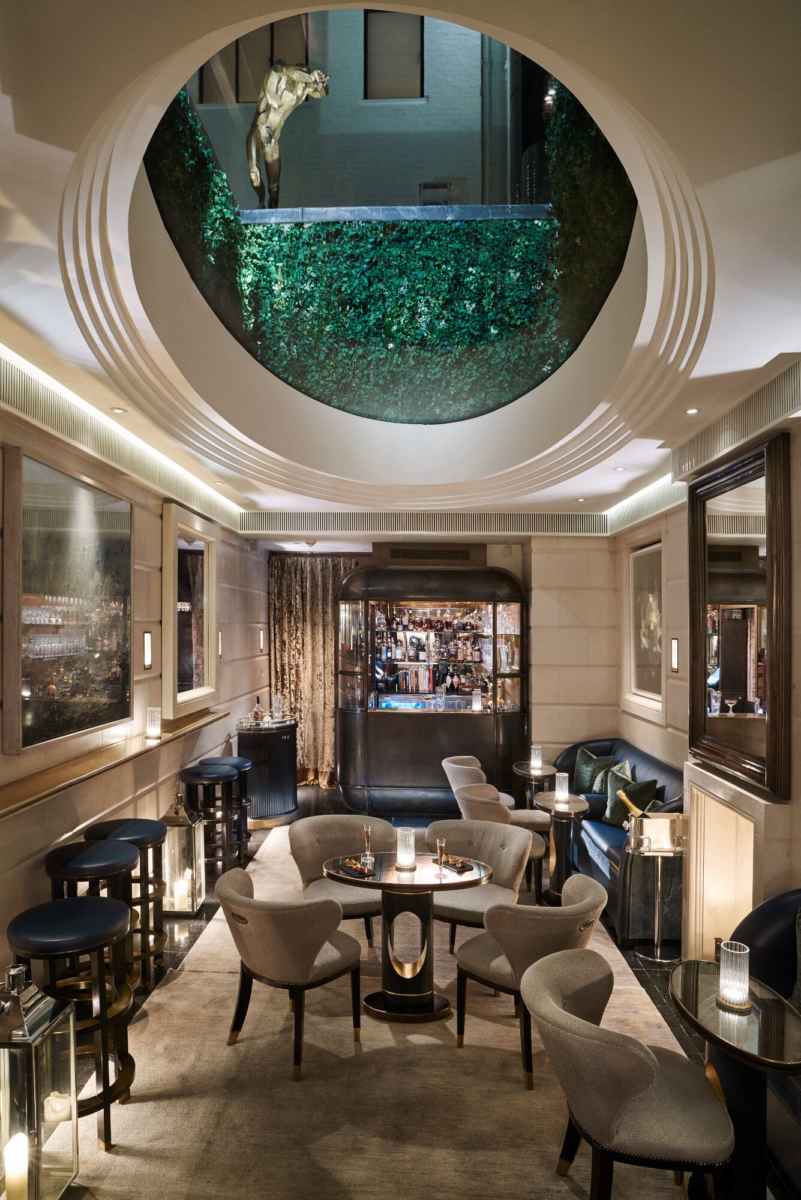
View of the Champagne Room. Photo copyright: The Connaught.
In 1815, Alexander Grillion opened the Prince of Saxe-Coburg Hotel as an offshoot of Grillion’s Hotel – formed of two houses owned by the Duke of Westminster. For convenience, it was known as The Coburg until 1917 when, during the First World War, it was renamed The Connaught, a reference to Queen Victoria’s seventh child Arthur, later Prince Arthur, Duke of Connaught and Strathearn.
An early advertisement for the Coburg proudly claims that the daughter of Louis XVI and Marie Antoinette, the Duchess of d’Angoulème was a regular at the hotel.
Grillion’s at Albemarle Street was closed when its lease expired. The operations where moved to the Clarendon on Bond Street, back then London’s largest and most expensive hotel. But the Grillon connextion did not last long and the hotel closed in 1872. The Grillon connection to The Coburg ended in 1879, when one Auguste Scorrier was granted the hotel lease from the Duke of Westminster.
Peter King writes that, in the 1890s, the Coburg was the ‘playground’ of Mayfair, and the Prince of Wales would use it for champagne-and-peaches parties whenever he felt cramped at Marlborough House.
Fast forward to 1892, when the architect Lewis H. Isaacs, already responsible for the building of two other hotels, was chosen by the Duke of Westminster to rebuild the two houses that had made up the original Coburg. He created a new, sumptuous one from the ground up. It all happened under the direction of the brilliant businessman Sir John Blundell Maple, son of John Maple, the founder of John Maple & Co, the famous furniture makers of London and Paris. In 1897, the new Coburg opened its doors, and a 90-year lease was signed on the building by a syndicate led by Sir John Blundell Maple. Obviously, the new Coburg was furnished by John Maple & Co, which also fitted the Elysée Palace and part of the Ritz in Paris.
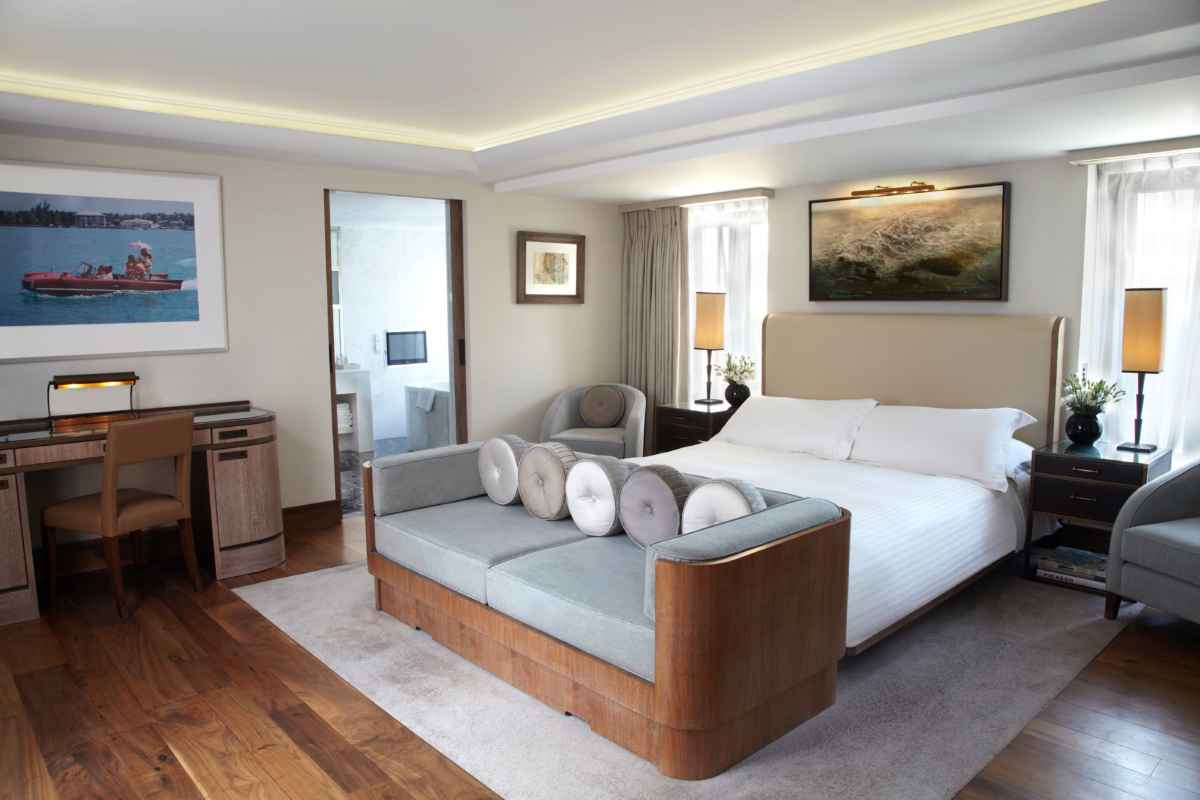
View of the Connaught Terrace Suite Bedroom. Photo copyright: The Connaught.
In the mid-1930s, the hotel was in poor shape and needed some fresh air. It was the Swiss Rudolph Richard who, in 1935, provided it. According to Peter King, his name will always be associated with the Connaught. First as GM, later as director, he brought the equipment and furniture up to date, from the matresses and the furniture to the boilers and refrigerators. He improved the restaurant and the wine cellar. Last, but not least, he was a personality of whom it was said that whoever he spoke to believed from that moment on that he was Richard’s friend. After the Second World War, Rudolph Richard was astute enough to recognize that the pre-war days would never return. At The Connaught, he aimed for perfection and “restrained elegance”, which characterizes the hotel until today.
In 1973, The Times, back then a newspaper like no other, with an aversion to people who had made it in trade, dedicted a detailed obituary to Rudolph Richard, “An eminent Hotelier”, who was not only responsible for The Connaught, but also Reid’s on the island of Madeira, the Lancaster in Paris, Mount Nelson Hotel in Cape Town, Burlington Hotel in Folkestone and Stone’s Chop House in London. In addition, he was chairman of Mansions Syndicate. Despite all these responsibilites, the Connaught was the apple of his eye, which he wanted to be the best of the best.
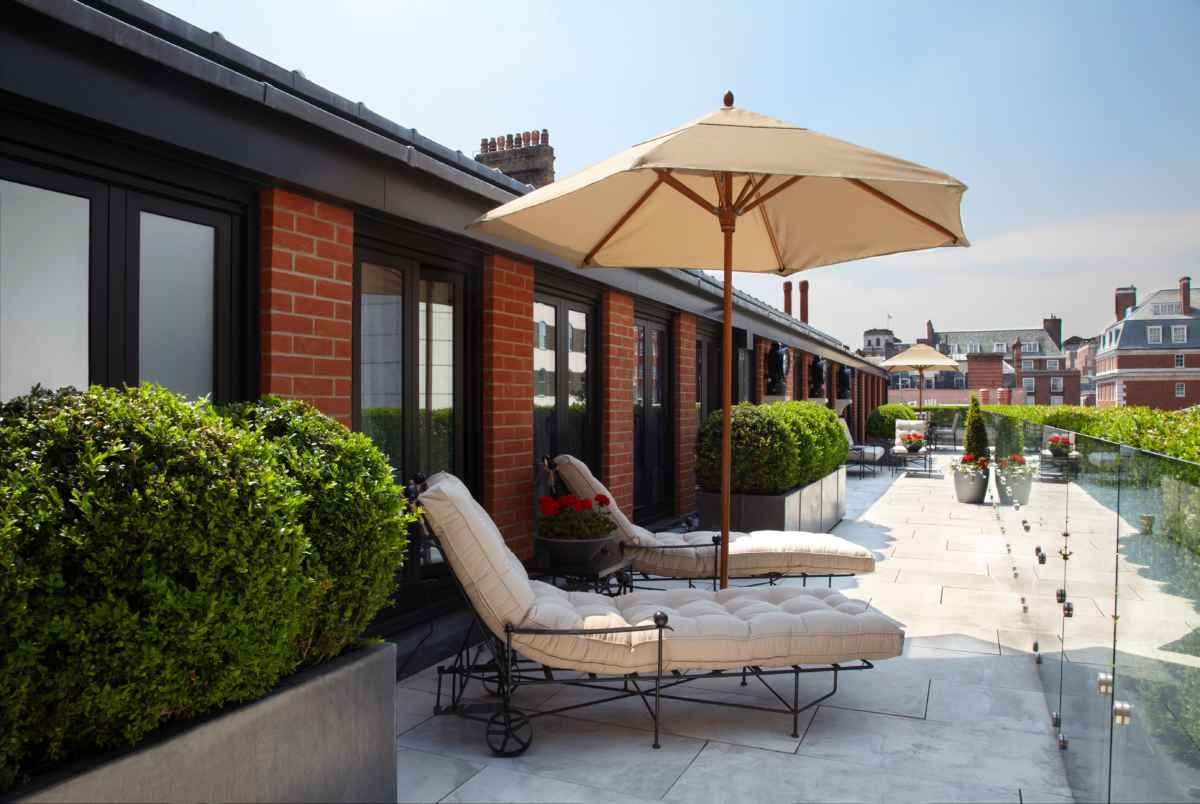
View of the terrace of The Connaught Terrace Suite. Photo copyright: The Connaught.
The other major 20th century figure at the Connaught was the Italian Paolo Zago, appointed GM in 1973, Managing Director in 1980; he resigned after 25 years as GM. Like his predecessors, he continued the tradition of keeping well trained, competent staff for decades. In a rare interview, he confessed that during his first 6 months as GM he did absolutely nothing but watch, listen, learn — and take notes. He refused mediocrity and standardisation. He focused on the continuity of good taste, dignity and old-fashioned values, while allowing the hotel to evolve naturally. He gradually introduced new back-of-the-house accountancy and logistics as well as new technologies such as air-conditioning. In 1993, 70% of all guests were return visitors.
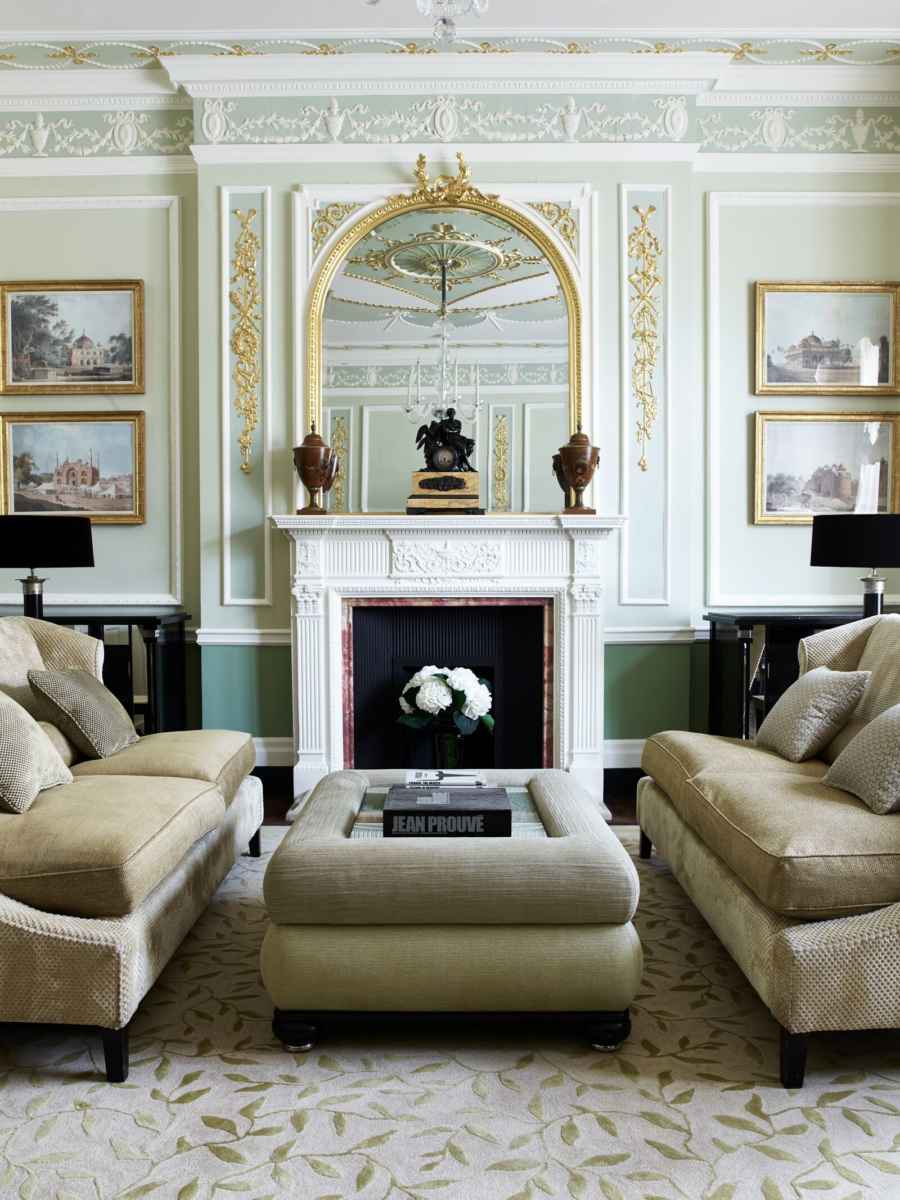
View of the Connaught Terrace Suite. Photo copyright: The Connaught.
Throughout the 19th century, The Coburg had attracted illustrous guests. This did not change in the 20th century under its new name. In the 1940s, for roughly two years, Charles de Gaulle lived in suite 103 and taking an additional room for his aide. It is said de Gaulle used to walk from The Connaught to Purdey’s, where General Dwight D. Eisenhower’s Deputy Chief of Staff, General Bedell-Smith, convened meetings to discuss strategy and plan the D-Day landings — conferences often attended by Eisenhower himself.
Among the wartime hotel guests was also the US Admiral Alan G. Kirk, in charge of the naval planning for the Normandy invasion. Among the regular clients of the restaurant were John G. Winant, US Ambassador in London, W. Averell Harriman, then the Administrator of Lend-lease as well as Eisenhower himself, who all had their offices nearby.
The new century brought us new forms of entertainment and a new breed of celebrities. Directors and (former) film stars such as Princess Grace of Monaco (the former actress Grace Kelly), Luchino Visconti, David Niven, Cary Grant and Lauren Bacall were regulars at The Connaught, as was Cecil Beaton, the photographer, diarist and designer.
Royalty at The Connaught: Her Majesty Queen Elizabeth the Queen Mother visited the hotel in 1992 to open the new kitchens. His Royal Highness Prince Charles visited the luxury hotel the same year. The Centenary of The Connaught was marked by a private celebration dinner attended by Her Majesty Queen Elizabeth II.
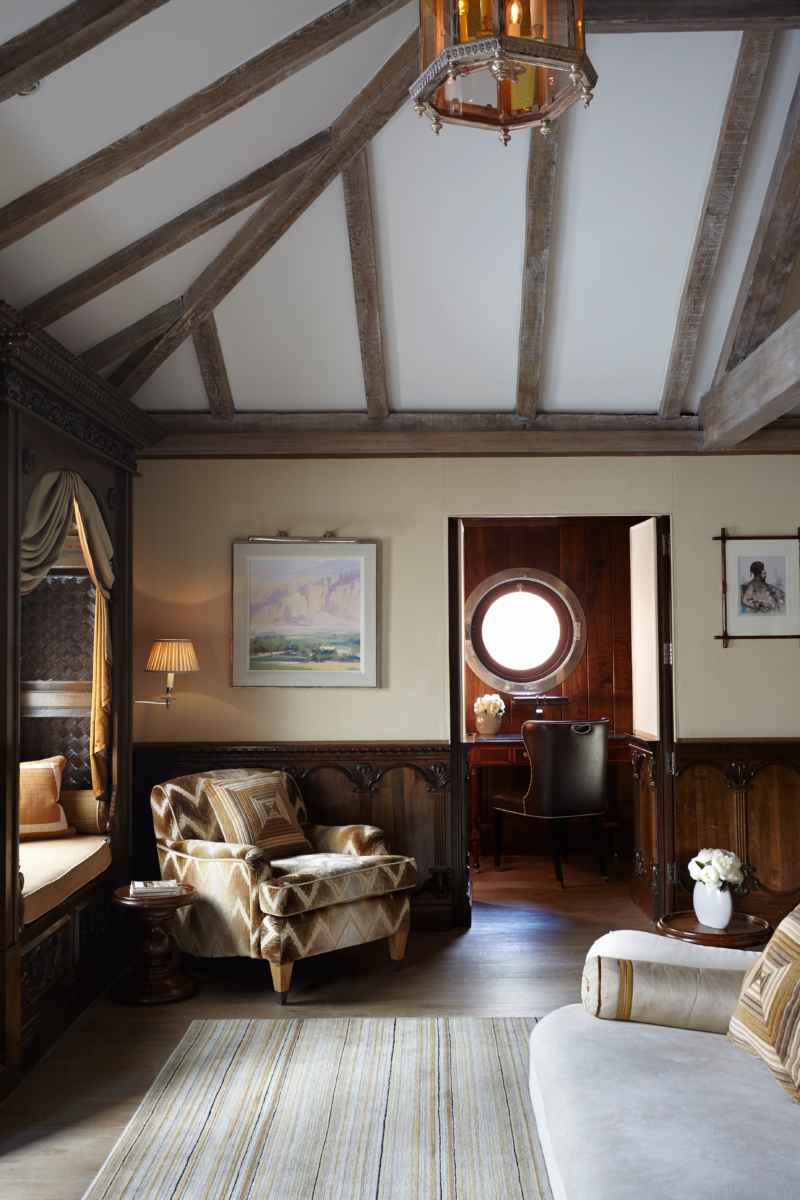
View of the Connaught Princess Lodge. Photo copyright: The Connaught.
The Mews at The Connaught
A hotel is a work in progress. A major, £70 million faceflift ended in 2007, when The Connaught re-opened its doors after an ambitious restoration and refurbishment project. Among the highlights were a new wing, the Aman Spa, a serene Japanese garden and David Collins’ luxurious Apartment suite.
Another major addition came in 2018 with unveiling of The Mews at The Connaught, a three-story townhouse with its own private entrance on Adam’s Row. The Mews were designed by well-known architect Michael Blair from Blair Associates Architecture with the idea to give it the look and feel of a private house in the heart of the city for the ultimate discerning urban traveller.
Ascending the wooden walnut staircase with bespoke stitched leather hand rails, guests arrive into a large open-plan reception room lined with full room length Douglas Fir floors, flooded by natural light, and complete with an outside terrace for alfresco dining on one side, and a baby grand piano for intimate musical recitals on the other.
The Mews is decorated with works by the Irish artist Richard Gorman, a Marc Newson designed pedestal for Taschen housing David Hockney’s hefty tome, a Louise Bourgeois piece entitled Couples, sculptures by Camille Henrot and Annie Morris as well as a walnut cabinet of personally chosen books and artefacts by architect Michael Blair.
Another hand carved wooden staircase leads up from the living room to the master bedroom. The double heighted ceiling the airy and open aesthetic felt across The Mews. The floating bed is positioned centrally in the room above a purpose designed rug reflecting soft autumn leaves with a large headboard echoing the architectural detailing of the bedroom. A striking marble bathroom with stand-alone oversized eggpod bathtub, double shower, large sinks carved out of a block of Calcite Azul Quarts completes the experience. In addition, The Mews enjoys 24-hour butler service.

View of the Connaught Princess Lodge. Photo copyright: The Connaught.
People looking for the limelight would stay at Claridge’s, people valuing privacy at The Connaught. Incidentally, since 1956, both hotels have been operating under the same umbrella: first the Savoy Hotel LTD (which took over The Connaught to fight of an unknown investor ready for an unfriendly takeover), subsequently the Maybourne Hotel Group (which also includes The Berkeley).
Until today, The Connaught remains faithfull to Rudolph Richard’s philosophy: Offering guests an unpretentious home away from home, serving others in an atmosphere of friendliness and comfort.
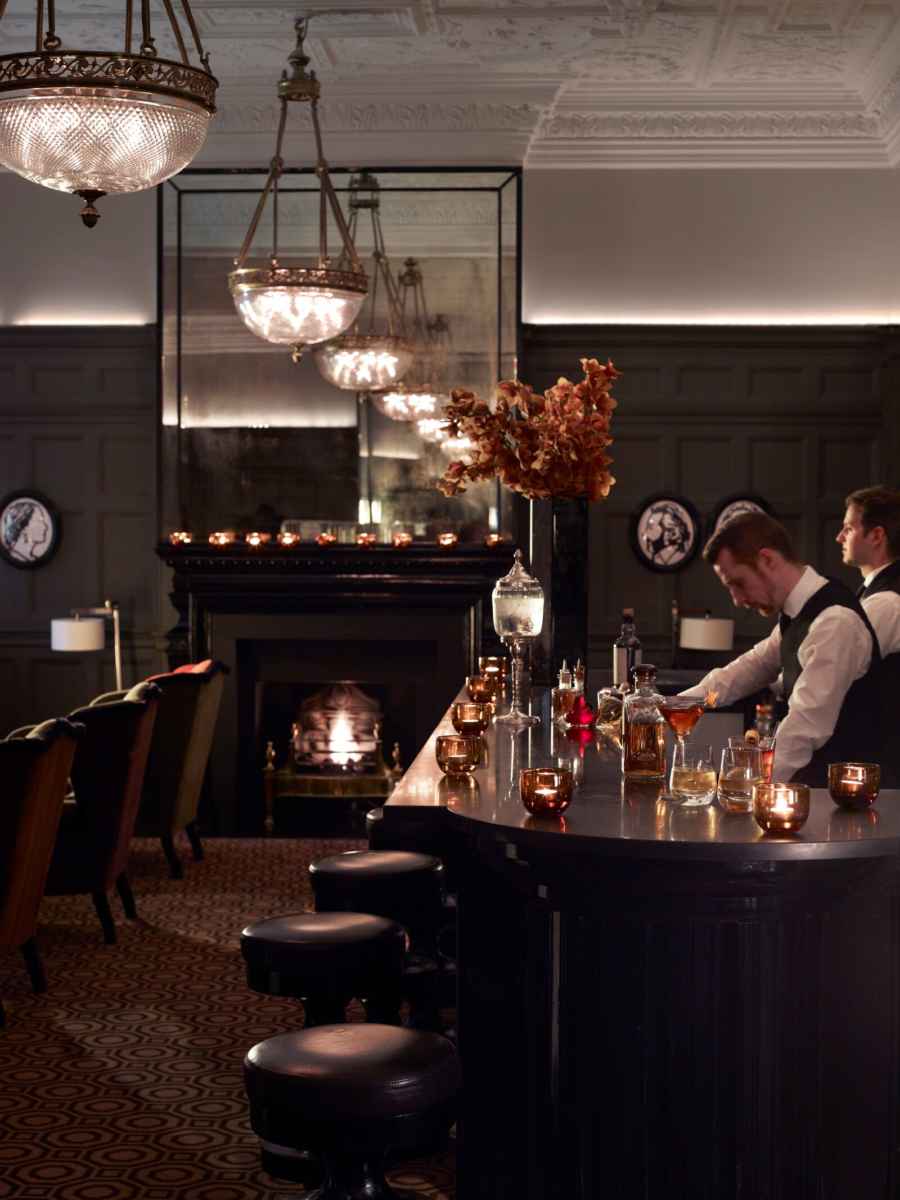
View of the Coburg Bar. Photo copyright: The Connaught.
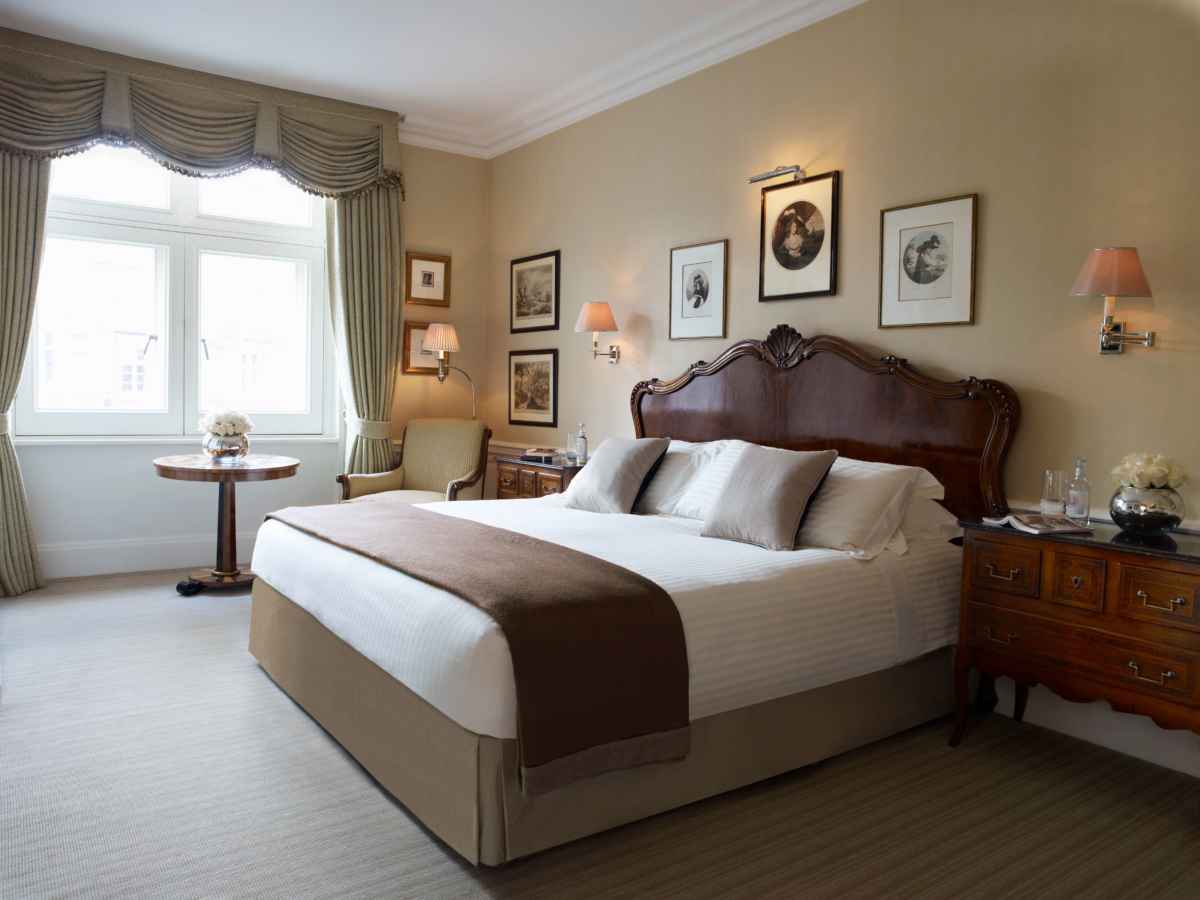
View of the Connaught Suite bedroom. Photo copyright: The Connaught.
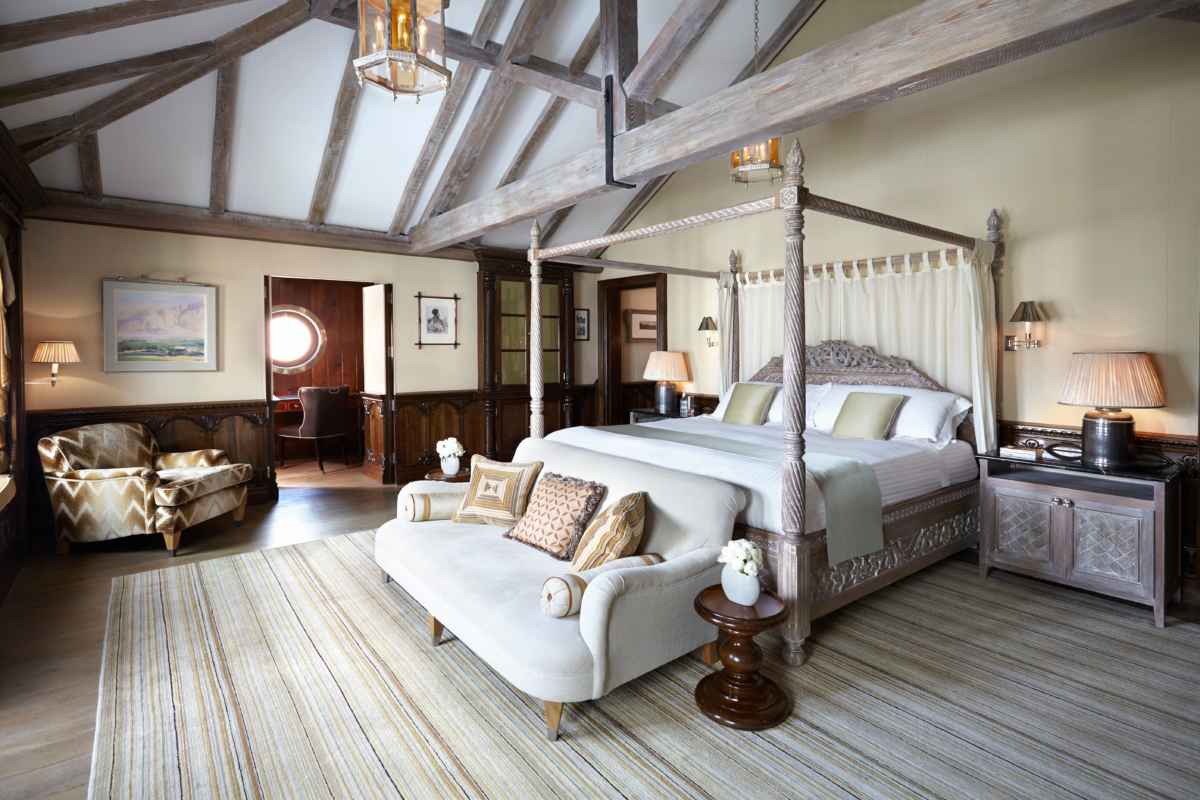
View of the Connaught Princess Lodge bed. Photo copyright: The Connaught.
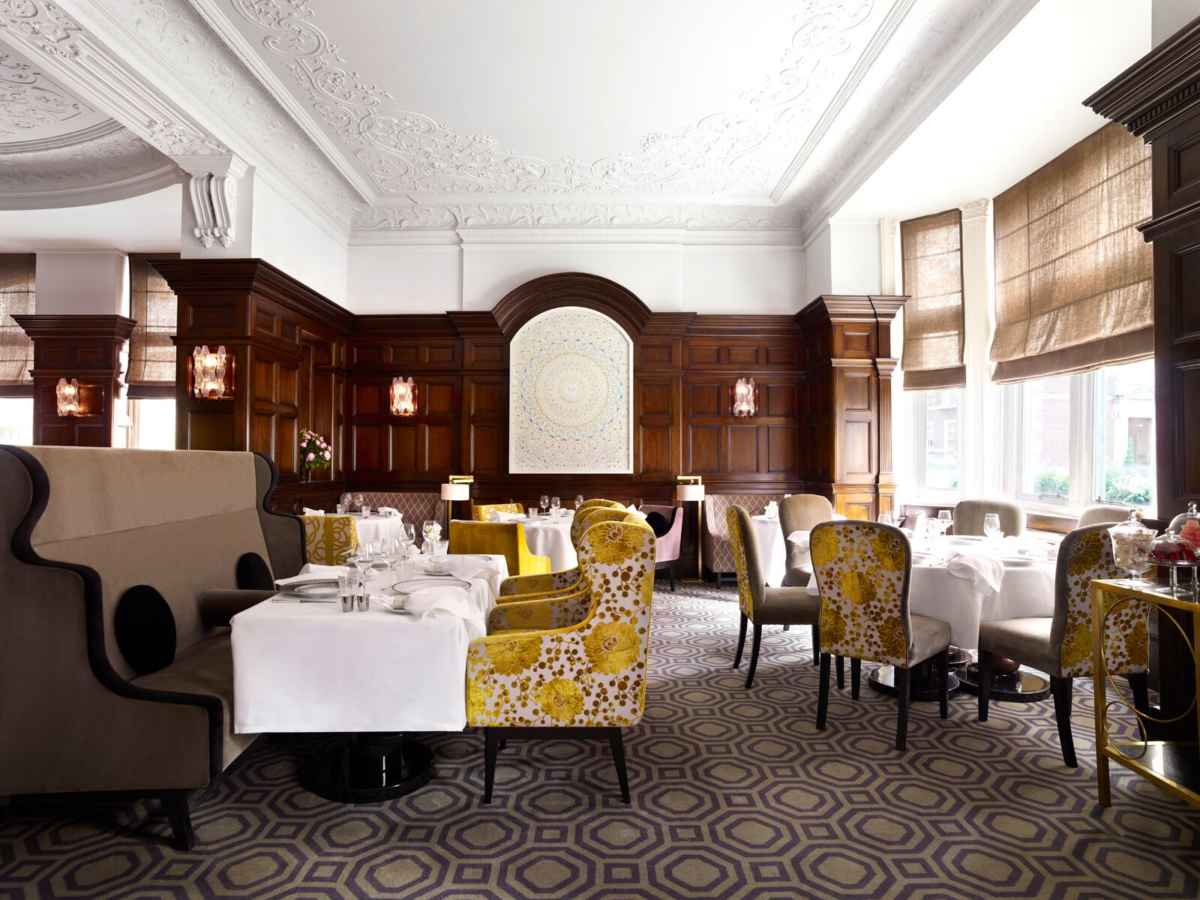
View of the Hélène Darroze Restaurant; the Michelin starred chef Hélène Darroze had arrived in 2008. In 2017, the French Michelin starred chef Jean-Georges Vongerichten opened at the luxury hotel his restaurant Jean-Georges at The Connaught. Unfortunately, I have not yet had the time to dine there. Photo copyright: The Connaught.
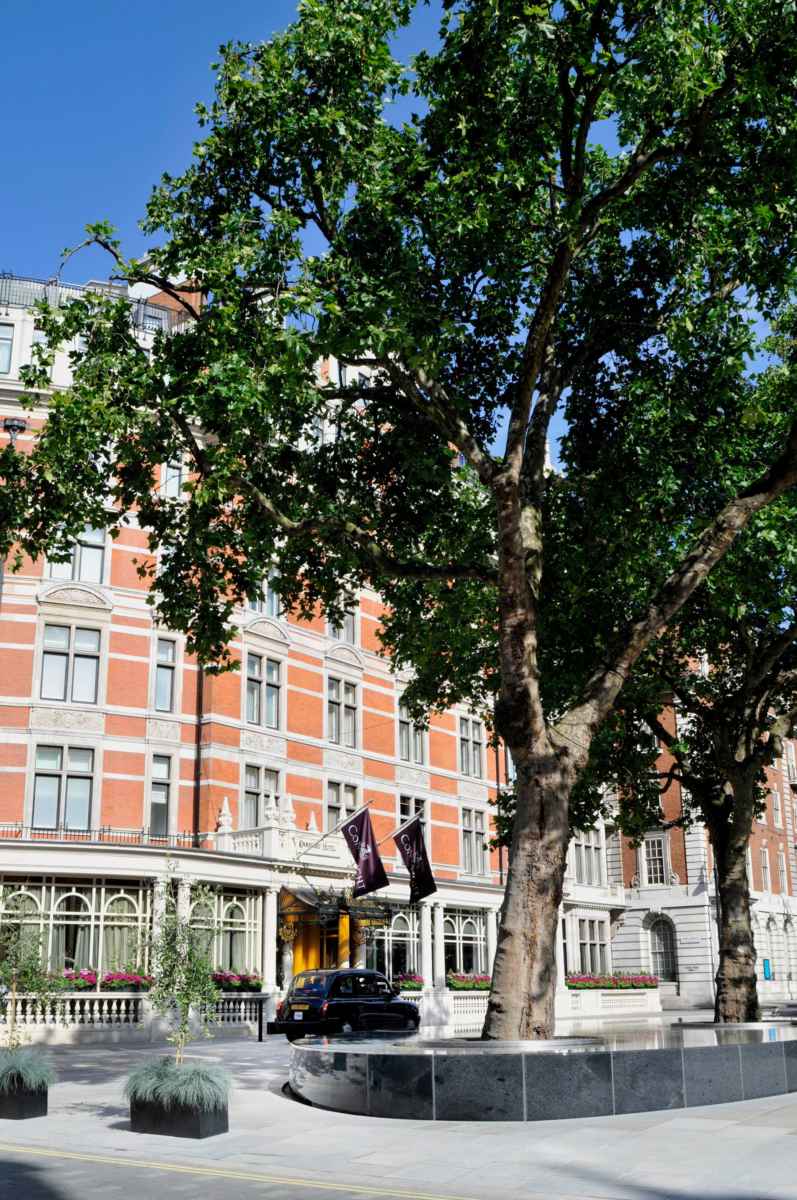
The hotel exterior. Photo copyright: The Connaught.
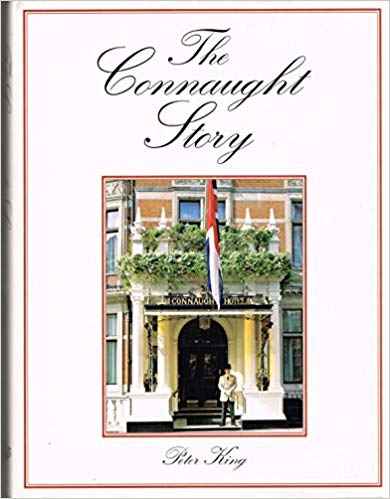
The main source for this article was Peter King: The Connaught Story. Hardcover, 1997. Order the book from Amazon.co.uk, Amazon.com, Amazon.de. Article added on April 2, 2019 at 15:26 Paris time. Last update at 16:55.